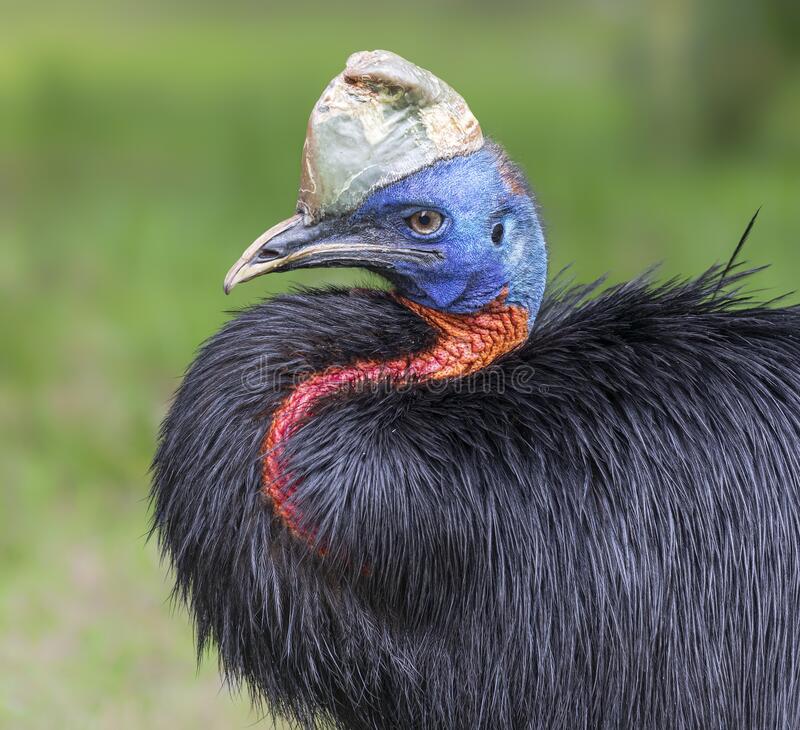ANIMAL: Northern/Single-Wattled Cassowary Casuarius unappendiculatus Type of Animal: Ratite Habitat: Low-elevation forest, jungle, swamp forest, river floodplains, wetlands Location(s): N New Guinea, Yapen, Batanta, Salawati, Waigeo Appearance: Large stocky flightless bird, orange/yellow/bright red neck, single wattle, black plumage, blue facial skin, gray-black casque/helmet on head, large feet w/ sharp claws, females larger than males Food/Diet: Fruit, berries, insects, snails, lizards, frogs, snakes, poop, flowers, fungi, palm seeds, mice, rats, carrion, birds, fish Status in Wild: Stable Conservation: Population monitoring, monitoring of habitat & hunting pressure Lifestyle: Solitary Additional Info: Called: Male: Cock Female: Hen Young: Chick Group: Solitary Weight: Male: 66-82 lbs Female: 128 lbs Gestation: 2 months Life Span: 25-50 years Height: Male: 4.9-5.2 ft Female: 5.9 ft Body Length: Male: 4.9 ft Female: 5.3 ft Main predators of adults are canids & crocodiles. Pigs, cats, pythons, large monitors, & quolls eat chicks/juveniles. Male plays sole parental role, guarding eggs/chicks. Chicks leave dad at 9-18 months old. Clutch size ranges from 2-6 eggs. Maturity reached at 2-3 years old. Play crucial role in seed dispersal in native habitat due to swallowing fruit whole & spreading seeds great distances. Crest/casque on head used to sort through undergrowth/litter & sometimes as defense. While stable & increasing, threats include habitat loss/fragmentation, deforestation, hunting for meat/feathers/bones/eggs, road collisions, taking chicks from wild to be raised for meat, killing out of fear, dog predation, & retaliatory killings (they sometimes kill dogs in defense). Active during the day (diurnal). Very shy/secretive in wild. Males eat/drink very little when incubating/guarding eggs. Like other cassowaries, they’re most closely related to emus. Like other ratites, they’re flightless. Also called one-wattled cassowary & golden-necked cassowary. Very low frequency calls often unheard by humans. Fun Fact(s): 1st identified in Western science in 1860. Sometimes kept in villages for use as pets, food, & feathers. Meat known to be so tough that people told to cook w/ stone in pot-“When stone is ready to eat, so is the cassowary." One of most dangerous birds in world due to sharp claws (especially middle toes). While shy, they’re fierce when cornered & highly temperamental. Males highly protective of eggs/chicks. They’re great jumpers & runners, running as fast as 30 mph & as high as 5 ft off ground.

524856 941310Deference to web site author , some great entropy. 848819